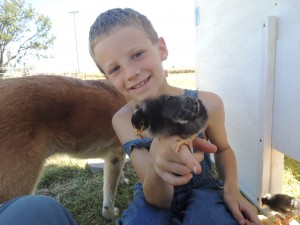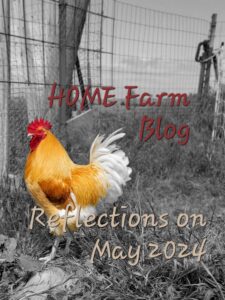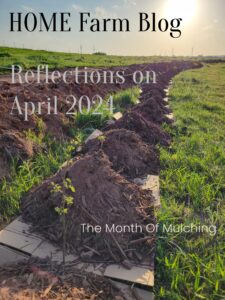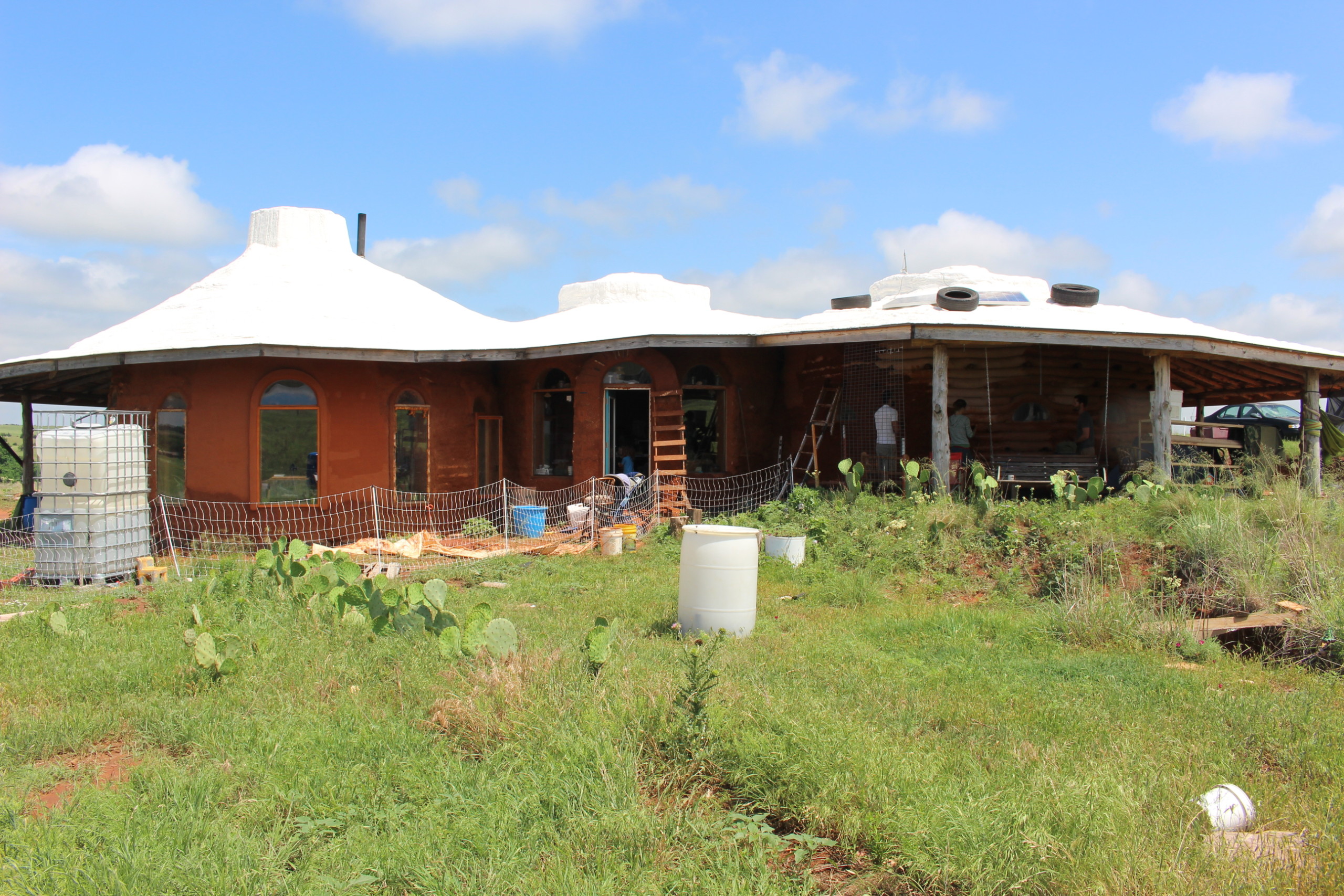Our First Chickens…
I have heard from many a beginning farmer that there are two ideal animals to really jump start the homestead – honeybees and
chickens. As you may know, we successfully built a Top Bar Hive but from what I have read it is easier and less stressful to start bees in the spring. So, the bees shall wait. However, you can start chickens in the fall. So began the research. I read and re-read Harvey Ussery’s The Small Scale Poultry Flock, a must-have for anyone thinking about raising chickens. And we scoured the internet for information on breeds; the ones that will do best in our climate, the ones that are the friendliest, the ones that tend to be good mothers, etc. Because I am not a fan of birds as friends per say, I knew I shouldn’t jump into an unfriendly game breed that might cause me to shiver at the sight of a feathered fowl and give up on the whole chicken-having homestead idea.

So, I chose one breed that donned great reviews like warm, child-friendly, great personality, and even snuggly, again and again. That breed also happens to be cold hardy and a fairly productive egg layer in the winter, when most chickens totally stop. Its tall, single comb makes it heat tolerant, because more heat is able to dissipate from the body. It is adaptable to free range, yet handles confinement and has proven to be a great mothering breed. This is one quality we wanted at least one breed to have, so that we could continue our flock at home, decreasing our dependence on hatcheries. They also lay brown eggs, which is the least important quality to us. (Contrary to popular belief, brown eggs are not more nutritionally dense than white eggs.) They are large birds which can be used for eggs and meat (dual-purpose.) And, they’re pretty. BackyardChickens.com even calls them the Scarlett Johanssons of the chicken world.

We wanted to have more than one breed so that we could get an understanding of more than one breed in our hot, dry climate, and so that if one perished, we would still have the other. In Ussery’s book, he lists chicken breeds that have been put on the American Livestock Breeds Conservancy’s Conservation Priority List. (Orpingtons are in the recovering status.) We wanted a breed that needed a bit of small-scale flock, homestead TLC, but many of the breeds listed as critical and threatened are hard to come by. Imagine that. Listed under the watch status was a breed dubbed the oldest breed in America. How could you go wrong with that? The Dominique is ideal for a free-range breed because it is an excellent self-forager and is striped black and white, making it less susceptible to predators. It is also winter hardy, a winter layer, dual-purpose, AND lays brown eggs (again, not important). AND, a pretty breed.
My wonderful handy-man husband constructed a mobile chicken coop, altered slightly from some designs he found online. I painted it white for summer comfort and with the idea that light would come in the windows and keep the inside of the coop lit up, even after it gets cold, to help winter laying productivity. The coop is a bit heavy, requiring two to get it up on its wheels, but with the winds we have here, I think that is an advantage. It has 4 nesting boxes, a couple of roosts, a chicken door, a human door, and a roof that can be propped open for maximum airflow. The floor is simply open to the grass. If we find that predators want to dig underneath, we’ll fix some hardware cloth to the underside.
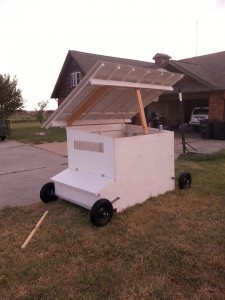
On the morning the chickens were to arrive, we all got up at the first sound of the alarm and waited for the phone call. You have to call the post office to notify them that live animals will be shipped. While there, you should open the box, so that if there were any casualties, the post office personnel can be witness. We only waited about 20 minutes before I heard Aaron on the phone saying, “Okay, we’ll be there to get them in a few minutes.”
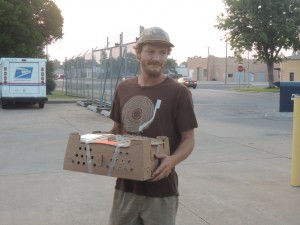
We let Julius miss the first hour of school for this important family event. Before we knew it, there was a smaller-than-I-had-imagined, box of peeping fluff in the backseat.
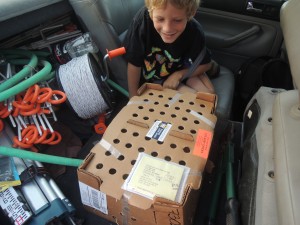
They had given us an extra chick and separated the two breeds by a cardboard divider. Julius was really excited to move that barrier to see what they would do. Of course this was after he put one Orpington in with the Dominiques, and one Dominique in with the Orpingtons. They were probably so near death from starvation that they didn’t care.
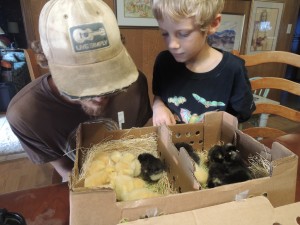
We got them into the coop and showed them that they could drink the water and eat the food. They were so tiny and vulnerable. The trucks going down the highway that I had largely ignored before were now extremely loud monstrous machines barreling down the highway at speeds that would scare a Nascar fan, all seeming to be threats to my sweet little peeping balls of soft down.
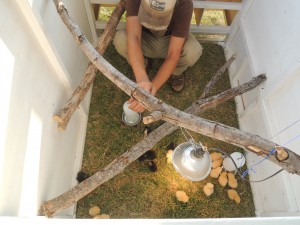
The first day, we gave them the cowboy version of electrolytes; a couple drops each of honey and apple cider vinegar in their waterer. Since Ussery’s book is all about growing your own feed and supplementing with store bought feed, it is with regret that we bought the chicken starter from the farm supply store. Because we are still currently living with the parents, we don’t have a lot of room to grow chicken feed, or to pasture the chickens, but we have the knowledge to do so and will, when we move the chickens to the homestead. So for now, they eat the chicken starter, what they can forage from the front lawn, and lots of soldier fly larva.
As I write this, the chicks are 10 days old and beginning to show some feathers on their wings and tails. They come out further from the coop every day, pecking at the grass and steering clear of the stickers, for the most part. We like to gather up some soldier fly larva from the worm bin and cupping them in our hands call, “chickadoos!” And they come running to gobble the treats.
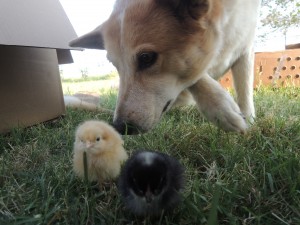
The dogs are slowly getting used to the fact that they cannot eat the chicks and we are experimenting with getting the dogs to lay down while the chicks pick off hitch-hikers. I think they are catching on that the giant white dog has lots of treats clinging to his legs, just waiting to be eaten.
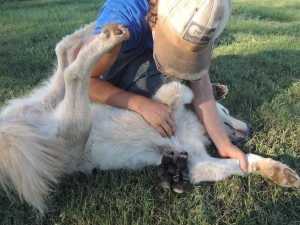
Harvesting ticks off your dogs to supplement your chicken feed: now that’s permaculture!
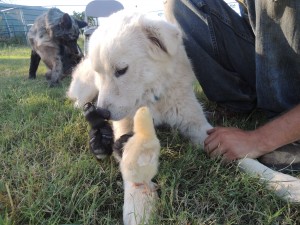
Cool chicken-related links:
http://www.backyardchickens.com/a/buff-orpingtons-chicken-breed-information-pictures
http://www.ithaca.edu/staff/jhenderson/chooks/chooks.html
http://www.backyardchickens.com/
http://gardenpool.org/beneficial-insects/black-soldier-fly-composter-automatic-chicken-feeder

